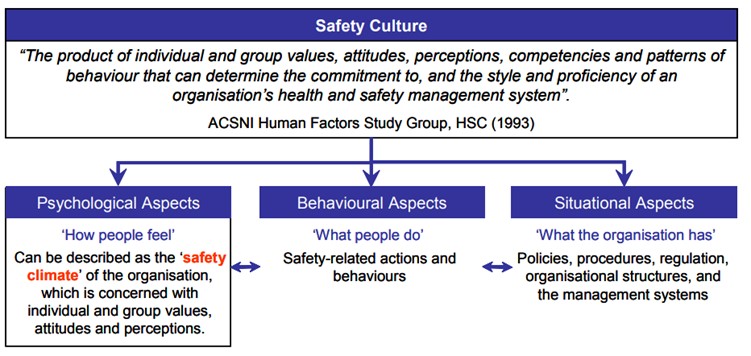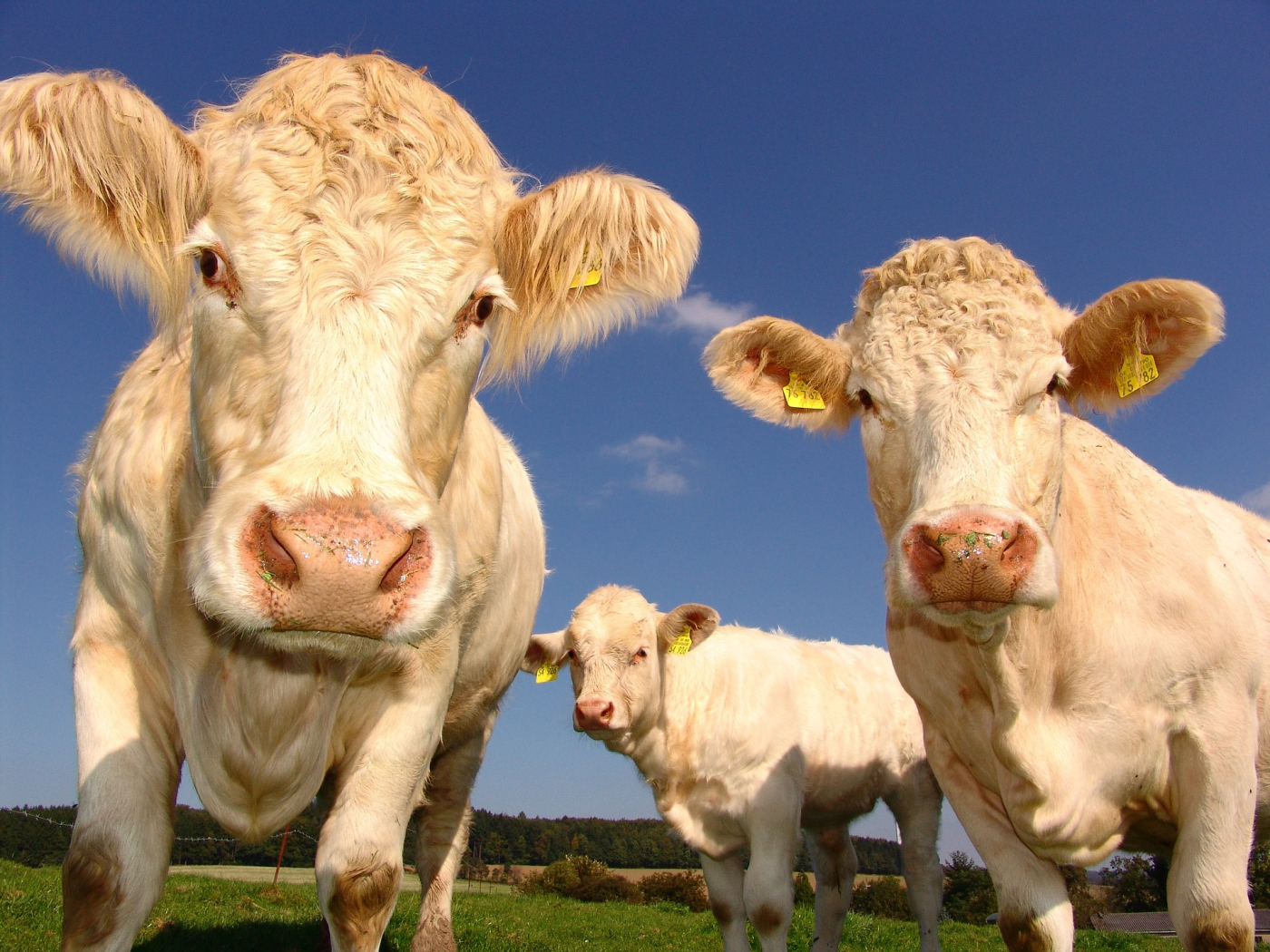In this article, Finch discusses how to maintain a positive safety culture when changing your business and what impact growing your business can have on your safety culture.
What is safety culture?
According to the ACSNI[1] Human Factors Study Group, HSC (1993), the safety culture of an organisation is “…the product of individual and group values, attitudes, perceptions, competencies, and patterns of behaviour that determine the commitment to, and the style and proficiency of, an organisation’s health and safety management.”[2]
Figure 1 below illustrates the three essential aspects feeding into a Safety Culture, which help determine whether an organisation has a “positive” or “negative” culture. These psychological, behavioural, and situational aspects can change, for the better and for the worse, as and when changes are experienced by people working in a business (e.g., business growth, changes in business procedures, increase in business outputs, increase in new employees, etc).
Examples of positive safety cultures could be where the majority of employees think of safety as an important thing, behave in a way that prioritises their own safety as well as the safety of others and where safety is fully integrated into their everyday work. This includes senior management visibly leading by example and fully engaging with safety across the business. Conversely, a negative safety culture is when the majority of employees think and feel that health and safety is a burdensome barrier to getting things done; they are sometimes poorly educated in health and safety and see it as unnecessary or not important. Furthermore, there can often be a lack of clear direction and leadership from senior management.
Businesses aspiring to maintain or achieve a positive safety culture should carefully plan for and monitor changes occurring within the business to establish whether these could impact employees (psychologically, behaviourally, or situationally).
What impact can a growing business have on Safety Culture?
When businesses grow, they may acquire more buildings, employ more workers, purchase new or used equipment, develop new processes, etc., all of which could alter the psychological, behavioural and/or situational aspects of behaviour and consequently, affect the safety culture. Examples of some potential impacts have been summarised below:
Psychological Aspects impacted by business growth:
- Interest in health and safety may decline as the numbers of employees increase, which may dilute good attitudes, perceptions, and belief in its value.
- All changes experienced within a business can be viewed as unsettling and can lead to a change in employees’ engagement with safety.
- Restructuring the workplace e.g. to accommodate new plants, equipment, processes, etc. can be unsettling and cause people to lose faith in established effective safety management systems.
Behavioural Aspects impacted by business growth:
- A change in employees’ perceptions and beliefs can in turn lead to employees changing the way they work, (i.e., not following approved procedures or risk assessments), which can result in increased rates of accidents and incidents.
- As with accident and incidents rates, an increase in rates of sickness and ill health may also be realised; employees not working according to procedures and risk assessments may not be using the necessary PPE, or working with equipment, chemicals, etc safely.
Situational Aspects impacted by business growth:
- Policies and procedures will require reviewing and updating due to the business changing; the current processes and way of working may now not be suitable and sufficient and may need adjusting. If adjustments are not considered, the business’s safety policies and procedures may be ineffective and lead to unsafe working.
- If business growth brings significant changes to the way the work is done, then the business must review all existing risk assessments and undertake new assessments as necessary. This is to ensure all risks are captured, assessed and reduced so far as is reasonably practicable. This is a legal requirement under The Management of Health and Safety at Work Regulations (1999)[4]
- A review of the structure of the business responsibilities may be required to align the new employees and new management structures to improve health and safety leadership from the top. Without a visible positive health and safety commitment from the Leadership Team, it will be extremely challenging, if not impossible to maintain a positive safety culture.
What can businesses do to maintain a positive safety culture during growth?
A positive safety culture can be maintained if businesses plan ahead and consider the potential impacts (positive and negative) agree on what actions need to take place and provide the necessary resources to enable the implementation of those modifications. Examples of this are listed below:
- For all business changes, a Management of Change (MoC) process can be followed, to ensure all aspects of “change” are assessed, and risks identified (positive and negative) with Stakeholders (i.e., Safety Team, Unions, Facilities, IT, HR, etc) and actions agreed.
- Maintaining good communication and engagement across the business during the period of change can help to alleviate employees’ concerns, and provide assurance, which subsequently can help to maintain employees’ values and beliefs.
- Consultation[5] [6]is not only a legal requirement but is essential for maintaining a positive safety culture. The consultation process enables employees to be informed and become engaged with the changes. In turn, this should help to alleviate concerns and assist in managing people’s attitudes, perceptions and beliefs.
If you would like to discuss anything you have read here further please contact [email protected].
To subscribe to the Finch Consulting newsletter for updates please click here.
[1] ACSNI – Advisory Committee on the Safety of Nuclear Installations
[2] ACSNI Human Factors Study Group: Third report, HSC (1993)
[3] A review of safety culture and safety climate literature for the development of the safety culture inspection toolkit, HSE (2005)
[4] The Management of Health and Safety at Work Regulations 1999
[5] The Safety Representatives and Safety Committees Regulations 1977 (as amended)
[6] The Health and Safety (Consultation with Employees) Regulations 1996 (as amended)



